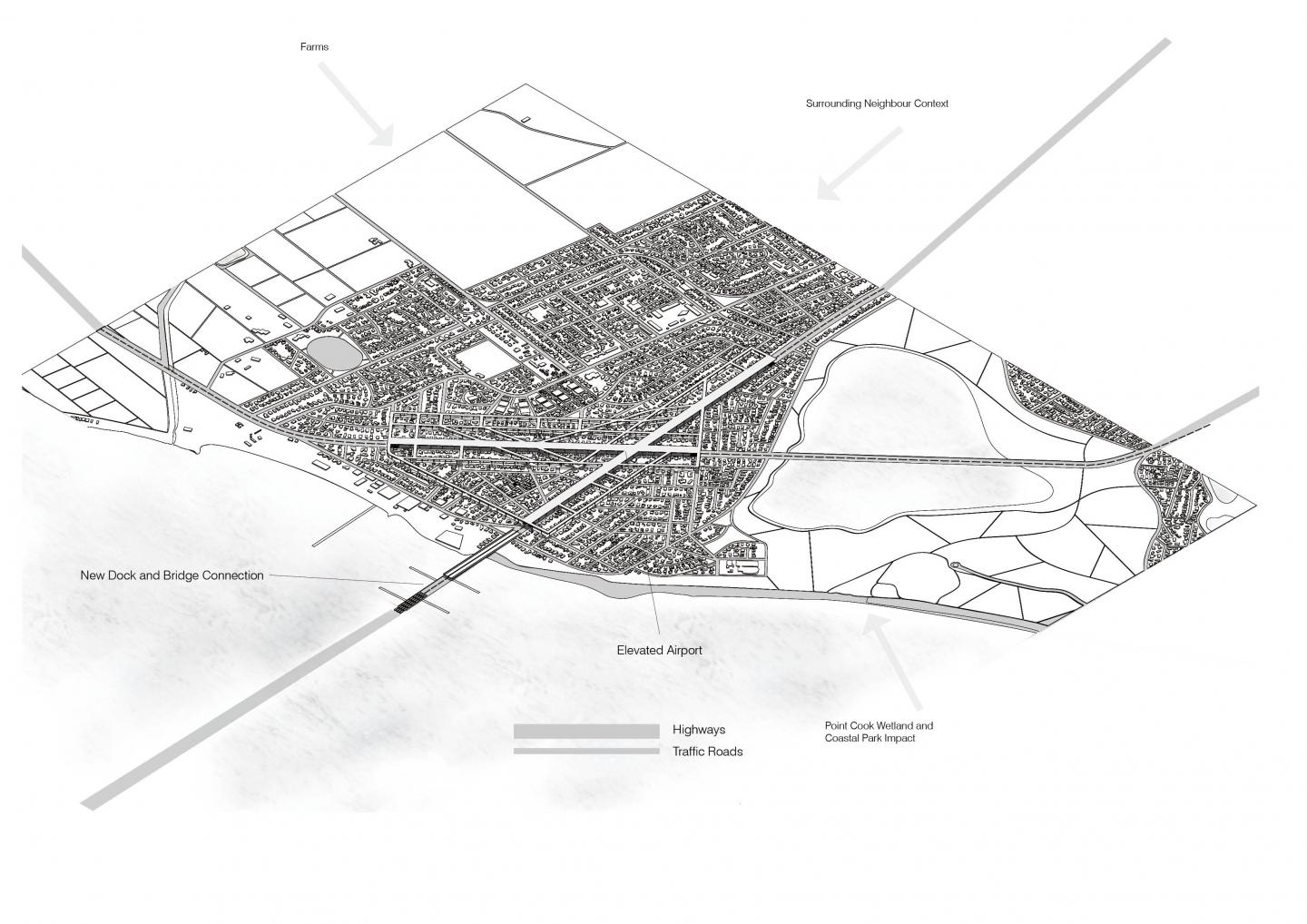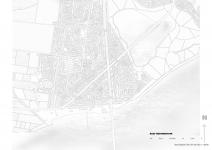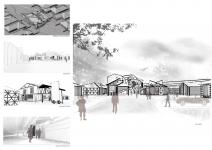The project is located at the base of Royal Australia Air Force, Point Cook, Australia. The RAAF base is currently on hot debates of transforming. The project aims to provide an alternative way of using the historical site. The design is aimed to work as an ark for the future.
Massive vacant land is under-utilizing. Also,the base is not open to the public. Various program could be introduced to better the neighborhood if the site is open for development. The question is how to keep this Air Force Relics in function and to pass on the memories from WW2. A viewer protection program is a method being introduced. The key memory - the fly track - is being elevated and in function. It provides air access to the site and also works as a monument on the ground. The tracks are expanded and developed. The grids that formed by the tracks and the surrounding neighborhood turn into traffic roads, highway and bridges - the basics of accessing the site. Thus, from a far view point, the flight tracks are invisible but the memory is embedded on the site.
On the ground level, the design to reinforce this method of is "narking". A special facility - rehabilitation center is placed in a super ordinary neighborhood environment. Placing on a land that two cul-de-sac meet, big profile view frames are introduced. The profile is created by the existing neighbor setting. The view frame is captured every five meters from both end of the cul-de-sac. Thus, in a far distance, even on airplane, the building would be seen as a continuation of the street view. Building from is also created based on the view of the existing neighborhood structure. The design facade from each neighborhood building is the angled through the experience of passing by the junction. Lane ways and openings are designed for easy access. A special patterning and structure method - Tudor pattern - is introduced to reinforced this idea of blending in.
2015
2015







